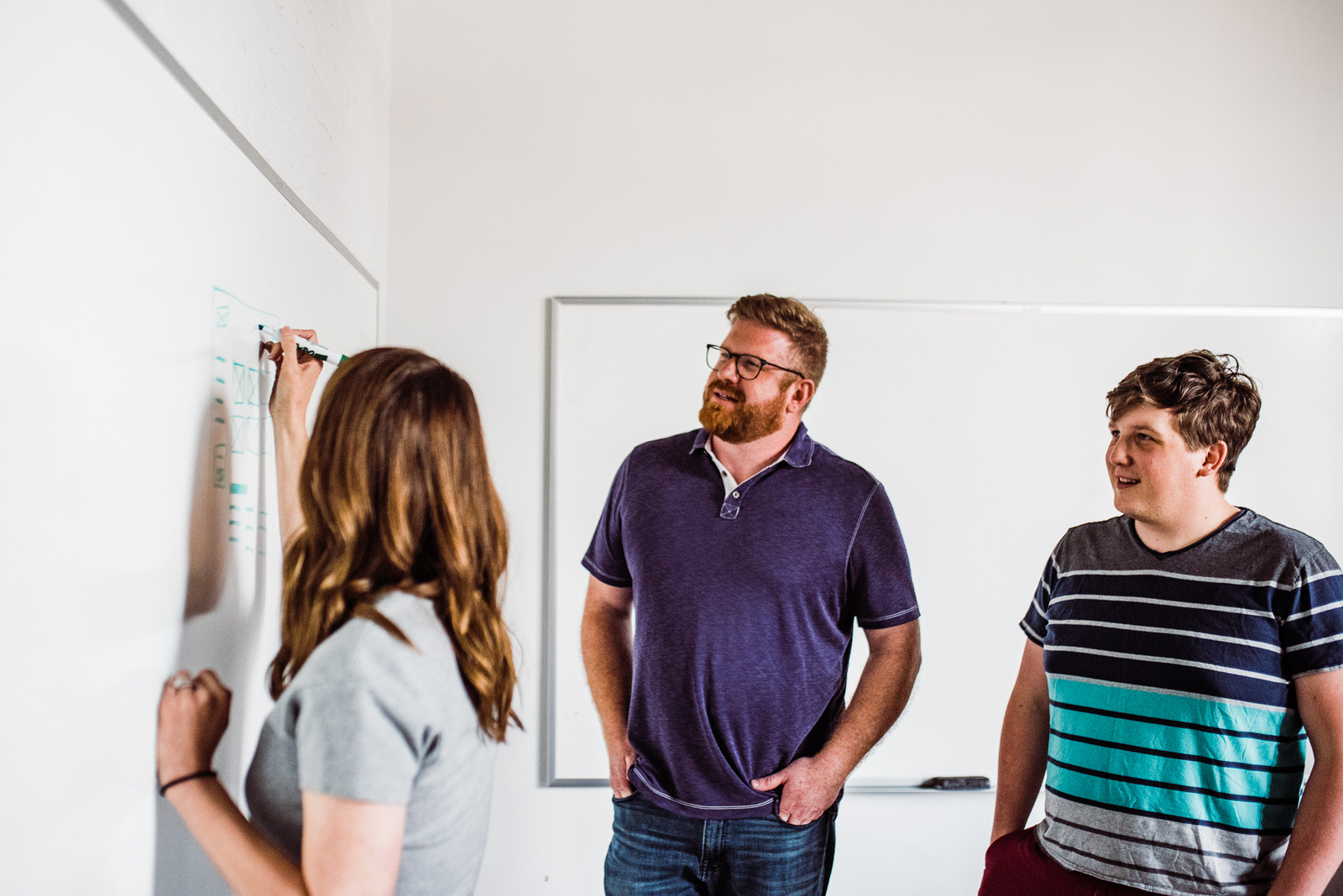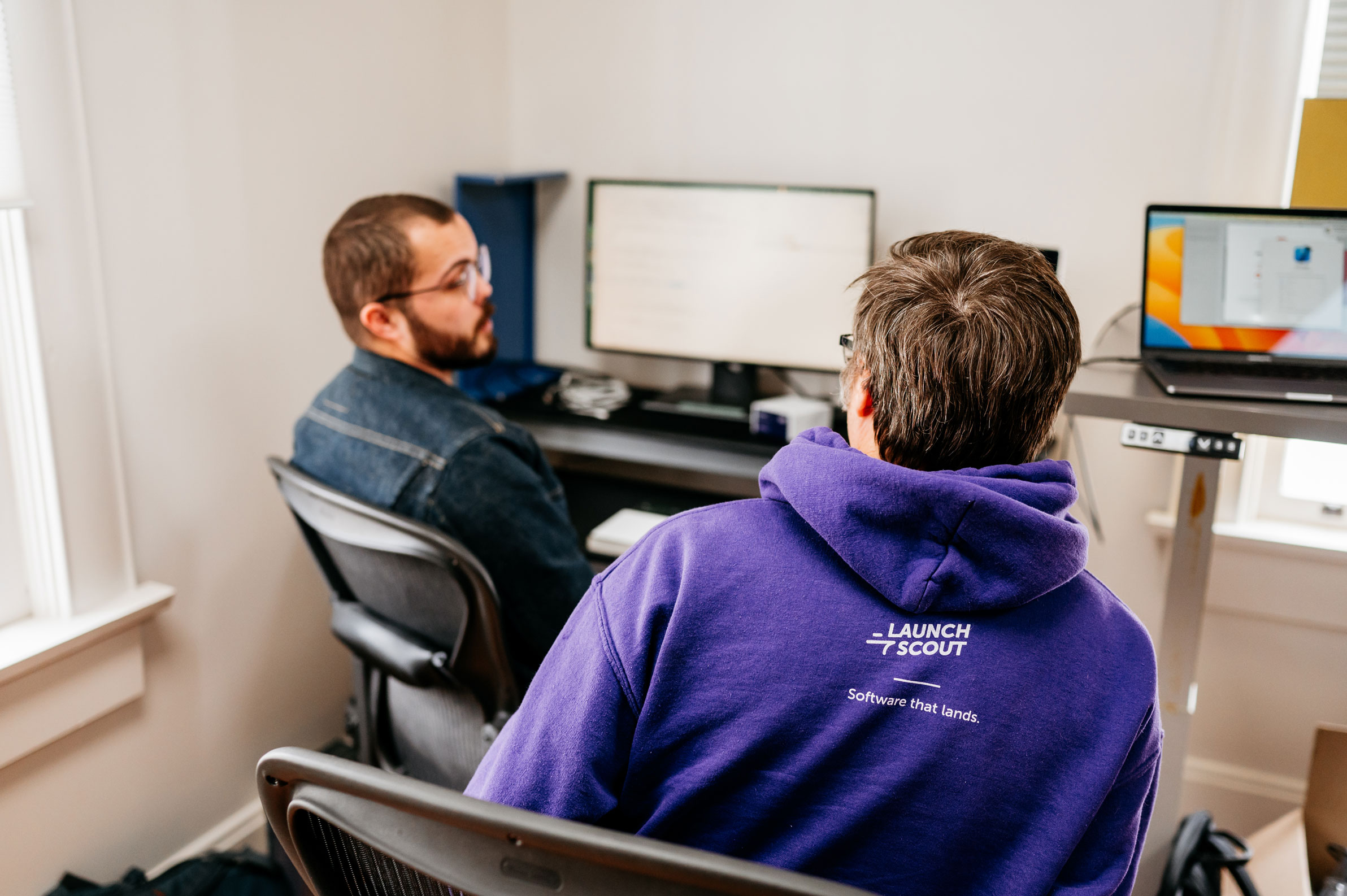
16 March 2020
Small and Mighty Teams
If you’ve been around Gaslight, you’ve probably heard us say, “Small Mighty Teams,” a time or two. If you haven’t, you’re likely wondering, “What the heck does that mean?” A Small Mighty Team is just that: Small and Mighty. Let’s dig in.
Too small, too big, and juuuust right
We aim to find the sweet spot for team size because we know that one person can never have all the answers and a crowd inevitably slows down the process. That being said, every project is different, so we can’t prescribe to a one-size-fits-all mentality. But if we have to put a number on it, we’ll say anywhere from three to six team members is ideal.
But, the number isn’t the only important factor here. We can’t just pull 3-6 people together and expect to succeed—we have to have the right people on the team. That means from both the Gaslight team and the client team. First, we have to look at the problem at hand and pull together the designers and developers with the right expertise to solve the problem and build the solution. We also need to make sure that we have the right team members from the client team. From the client, We need someone who has the domain expertise to help guide us, and someone who has the authority to make decisions. Sometimes that is the same person, sometimes it’s not, sometimes it is a few people—whichever way, is fine with us as long as we’re all working closely together!
You may ask, “Why does that matter?” Well, in our eyes, working closely together is critical. We’ve found that the level of client involvement is one of the biggest indicators for success for a project. But—deep breath—that doesn’t inherently mean that the success of the project is on your shoulders. It also doesn’t mean it is all on ours either. The success of a project is a shared responsibility. We’re here to help solve your users’ problem, and we’ll do that a lot quicker with easy access to your insight and experience.
What makes a team mighty?

The biggest secret weapon of small mighty teams probably sounds simple, but it can be incredibly hard in practice: laser focus. It’s the most impactful way to speed up the development process and deliver a better, more effective project in the end. We tackle this by dedicating our designers and developers to one project team at a time, and we focus on one thing at a time. We understand that our clients can’t usually clear their entire schedule and come sit in the office with us—though it’s awesome if you can!—but the more available you are to answer questions and talk through things, the better.
This leads to the next mighty-maker: Clear, continuous communication. A daily check-in, or stand up as we like to call it—roughly 15 minutes—allows the team to ask each other questions, give a quick status report and alert everyone of any issues or hold-ups. These can happen in-person, over the phone or through a video conferencing tool; we’re not picky! The most important part is having a standing time each day to briefly connect. We also try to find a cadence for more strategic, planning meetings throughout the project. This allows us to take a step back from the details and ensure we’re all still aligned in the direction we are heading at a high level, and which piece of the pie will be most valuable to tackle next in that journey.
Now, we’re focused and have a clear communication plan in place—but there’s a little more to it. Having a small team makes it easier to look over each other’s shoulders, too; and we mean that in the most literal sense possible. We value working together every step of the way, and that means designers, developers, and clients working on the same feature at the same time. Sometimes that literally means looking at the same screen while we’re working through something. Sometimes it means UX planning and doing user research around a feature while databases are being set up to support it. Either way, we can’t even begin to articulate the value we find in cross-functional collaboration. The problem-solving process always goes quicker and smoother when you have each perspective heard throughout.
This brings me to the final piece of the mightiness puzzle. Small Mighty Teams need autonomy and authority to move fast and do their best work. I mentioned above that we need the client-side decision-maker embedded in our team—this is where that comes into play. As a team (including you!), we need to be trusted to make decisions so that we can move quickly. By granting the team autonomy, we’re moving the decision-making closest to where the relevant information lives, rather than outside the project where context is lost.
At the core of it all
Essentially we’re talking about a small team of designers and developers who embed themselves in your business’ problem space with you. Our goal is pretty simple: to understand your users’ problem, how that aligns with your business goals, and to help you build the best digital product that marries those two together.
We want to be your partner in this. We’re better together. And we believe this so much that it’s one of our core values. If we work with you on a project, we want to work with you. What I mean by that is that we’re more successful when you are involved throughout the process—not when we shake hands, disappear, and return 6 months later with a big reveal. Working alongside you also means making decisions alongside you. We’re a team, and having the autonomy to pivot as we learn is important for us to move quickly and effectively.



